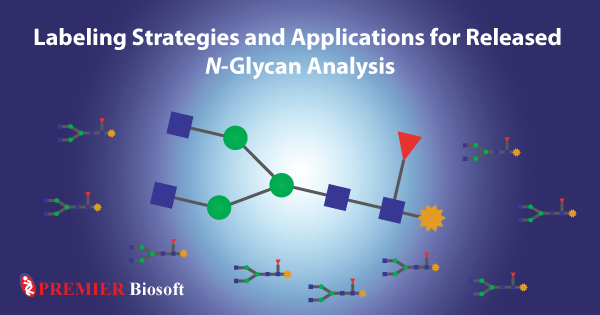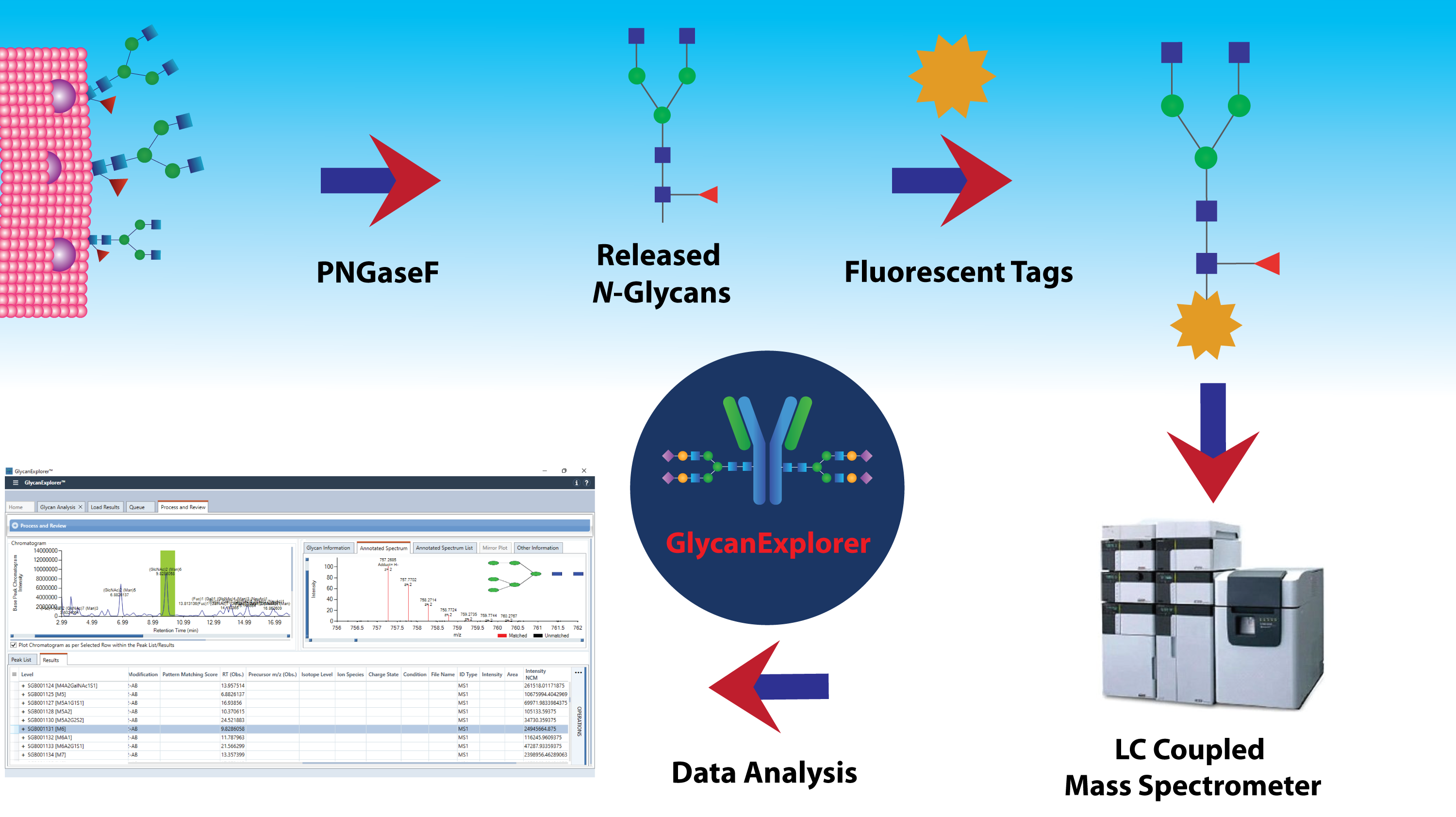Labeling Strategies and Applications for Released N-Glycan Analysis

August 30, 2022
Aberrant glycosylation is linked with several physiological diseases such as cancer, heart diseases, and immune-related diseases. Understanding these disease-related alterations in glycosylation can be explored for diagnosis or treatment strategies for these diseases. For biopharmaceutical development and quality control of glycoprotein-based drugs, comprehensive and regulated glycosylation is essential. The structural characterization of glycans is critical for therapeutic glycoproteins because protein glycosylation can impact the efficacy and safety of glycoprotein-based drugs.
With recent advances in the glycomics field, various analytical methods have been developed for N-glycan characterization. The majority of the N-glycans are characterized after the enzymatic release from the protein backbone. Due to poor ionization in their free form, the released N-glycans are commonly derivatized to increase the sensitivity for analysis. Among the different derivatization strategies, fluorescent labeling is predominantly used. The fluorescent labels enable the optical detection for liquid chromatographic (LC) profiling and, some labels can improve the ionization efficiency for mass spectrometry (MS) detection. A high-throughput N-glycan identification can be attainable when coupled with two or more analytical methods. LC coupled with MS has emerged as one of the most promising approaches.
Over the years, several fluorescent labels were used for N-glycan labeling. In this blog, we have discussed a couple of labels widely used in biotherapeutic glycan characterization.
1. 2-aminobenzamide (2-AB):
2-AB is the most frequently used fluorescent label. The glycans bind to this label via a reductive amination reaction. During this reaction, the primary amine of the label reacts with the aldehyde group of the glycan to generate an imine, that is further reduced to produce a stable secondary amine. Due to their one label per one glycan stoichiometric attachment, the relative quantification of glycans based on fluorescence intensity is possible. However, the major disadvantage of 2-AB is poor ionization efficiency when analyzing N-glycans using MS.
2. Procainamide (ProcA):
ProcA is another fluorescent label that reacts with N-glycans via reductive amination similar to 2-AB wherein it shows increased fluorescence and ionization efficiency. This is due to the presence of a basic tertiary amine tail that acts as a high proton affinity. Hence, ProcA is usually chosen for the positive mode of MS.
3. 2-aminobenzoic acid (2-AA):
2-AA functions are similar to 2-AB and Procainamide which use the reductive amination reaction mechanism for labeling the N-glycans. However, 2-AA comprises a negative charge, unlike 2-AB which allows 2-AA to be used for both positive and negative polarities of MS.
4. RapiFluor-MS (RF-MS):
Another label called RapiFluor-MS (RF-MS) is offered by Waters Corporation which applies different chemistry than the above-mentioned labels. RF-MS comprises a rapid tagging functional group that modifies the glycosylamine-bearing of released N-glycans to a stable urea linkage. Furthermore, RF-MS comprises a quinoline fluorophore (for fluorescent detection) and a basic tertiary amine (to enhance positive mode ionization).
5. InstantPC:
InstantPC was introduced by Agilent Technologies which labels the glycosylamines of the released N-glycans to form a stable urea linkage with the N-glycan. InstantPC has enhanced fluorescence intensity and MS ionization.
Biopharmaceutical industries working with these fluorescent labels are often in need of a one-stop informatics solution for incorporating one or more labels for analyzing therapeutic N-glycans. GlycanExplorer™ is a software that supports all of the aforementioned labels for fast and accurate characterization of released N-glycans. For more information, please schedule a meeting with us.

Fig: Analysis workflow for fluorescent-labeled released N-glycans
| Comment | Share |
|


